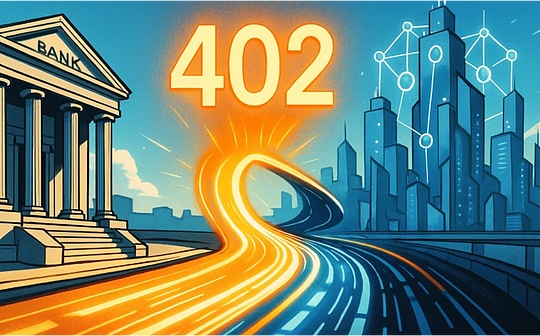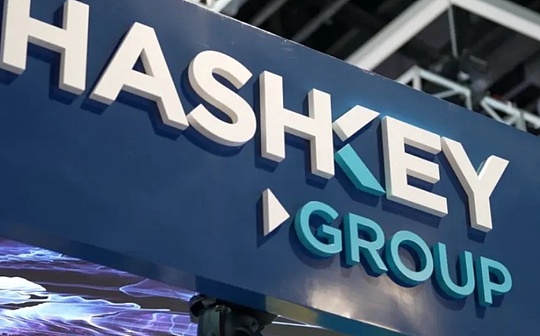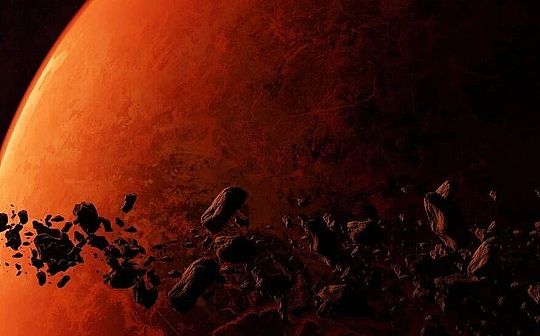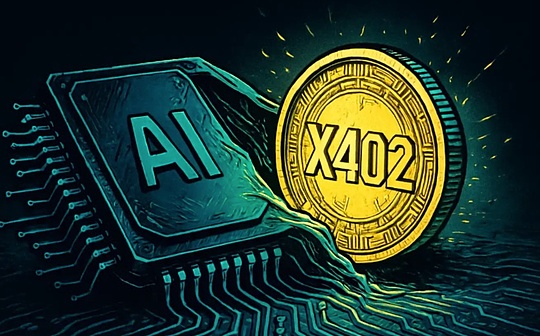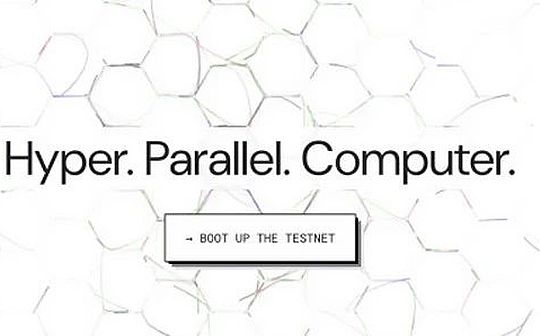
Author: Permadao
Anterior
AO is actually an extension of the storage consensus paradigm (SCP, Storage-Based Consensus Paradigm). The latter is similar to sovereignty Rollup. The core idea is to decoup up calculations with DA/storage.Calculate/verify data.
Because Arweave has extremely high data carrying capacity, the DAPP platform based on the AO and SCP architecture can greatly save data release and storage costs, which is convenient to support some scenarios that have strong pursuit of throughput.
In most people’s existing cognition, Arweave focuses on permanent storage concepts and has been used as storage layers by various projects for a long time.Arweave’s most well -known narrative is: to become the Alexander Library that will never disappear. The ultimate purpose is to preserve human civilization.
Therefore, after Arweave’s AO computer was released, Arweave transformed into a parallel super computer is very unexpected. It should be pointed out that Arweave can still be used as a storage layer. The AO architecture is superimposed by the storage function rather than replacement.
AO is consistent with SCP. The calculation process of AO can be executed parallel, so it can have efficient computing power.The processes of AO can be connected. Their data format remains consistent. All the data is finally stored in the Arweave main network according to the Bundle format of ANS-104.
All the logs in each process are completely stored, and the holographicState of the final process is left on Arweave.
AO’s computing power combines ARWEAVE’s permanent storage capacity. In fact, it is a global high -end computer that has no review and ubiquitous global high -end computers. On it, DAPP of any type, arbitrary language, and any public chain can access ArWEAVE.It is cheaper than Ethereum, but more efficient decentralized computing services.
AOS is slightly different. If you understand AO as a computer architecture, then AOS is an operating system instance.
In essence, AO is a architecture system. Users need to interact with AOS -like operating systems to use the corresponding functions. In order to discuss convenience, the following uniformly use AO to refer to it, but users need to pay attention to themselves. However
Points in this article:
-
Arweave launched the AO architecture, hoping to transform into an all -around player who storage and computing, to change the current status of only storage concepts in the market;
-
Arweave’s AO architecture is superimposed on the function of storage. The AO architecture has the potential to communicate any public chain and DAPP;
-
AO related technologies include a distributed architecture SSI (single system image), Actor Model (ERLANG language is not a model), and the SU/MU/CU unit formation composition.
AO/SCP has huge potential and is expected to stimulate the development of the Arweave ecology. It is necessary to observe the continuous attraction of the “under -chain computing+chain storage” model to the project.
Technical interpretation
Let’s introduce some premise as a supplement to AO.After the recent Cankun upgrade and EIP-4844 activation, the data storage problem in Ethereum has become increasingly important.
For example, the BLOB dedicated to storing Layer2 DA data will not be permanently reserved in the Ethereum network. Nodes can delete BLOB data that exceeds the time window. At that time, the eliminated data needs to find another storage place.
Although ETHSTORAGE and other storage platforms based on Ethereum are solving the problem of BLOB data expiration, this is not the native solution of Ethereum, and it needs to be dependent on some additional design mechanisms.
In addition, although EIP-4844 can greatly reduce the cost of data release, it is still very high compared to Arweave.
Different from Ethereum, Arweave, who ran away from the slogan “Alexander Library” at the beginning of its launch. Although it looks simple in the calculation function, its native support data will be forever, and the cost is extremely low (stored 1GB data about tens of dollarsThe cost of transaction with 1 Ethereum is flat).
In terms of data redundant storage, Arweave will associate the probability of outlets with the completeness of the node local data set. If the storage node deletes some data, the probability of the successful mass will be reduced, and the node with the most data is retained, which is more more than the more data.The “computing power” of the high outlet will get more rewards.
Through this method, Arweave’s incentive system can guarantee any paragraph of historical data, which can be greatly probably stained by redundant storage.

It can be said that Arweave is suitable for decentralized data storage and release layers with extremely low storage costs, and AO and SCP are AR -based modular blockchains and DAPP architectures.
Although the SCP design mode is theoretically, there is a large difference between security -based modularized schemes such as Ethereum Rollup, but the difficulty of landing and the difficulty of connecting with the Web2 platform is very high.
Because from the beginning, he did not intend to limit himself to a narrow implementation path like Rollup. He wanted to blend the web2 platform and Web3 facilities with a wider and more open framework.

Picture source: Geek web3 “Interpret SCP: Jump out of the ROLLUP fixed -way de -trust infrastructure paradigm“
The figure above is a schematic diagram using the SCP solution to apply EVERPAY. The DA layer uses Arweave, which is the large circle in the figure.
The brown circle is the coordinator COORDINATOR, that is, the execution layer, similar to the Ethereum Layer2 sorter. After the user submits the transaction to the coordinator, the coordinator will execute the operation and submit these DA data to AR in batches.
As for the detector Detector, it is a bit similar to the challenger/verification of Ethereum Layer2, they will draw the DA data submitted by the coordinator from Arweave to calculate or verify the transaction results.
The tester’s client is open source and anyone can run.Watchmen, the watchman, is actually a multi -signature node that manages the cross -chain system, which will verify and execute cross -chain requests.In addition, the watchman is also responsible for signing a governance proposal.
It is worth emphasizing that the architecture of SCP is not as strict as Layer2 of Ethereum Layer2, but it actually provides a higher degree of freedom and more customized options for the project party who uses the architecture, and has reduced it.The use of costs can be said to be a maverick and brain hole.

Picture source: Geek web3 “Interpret SCP: Jump out of the ROLLUP fixed -way de -trust infrastructure paradigm“
The deletion of complexity is simple. The framework of AO can be divided into three parts, namely: distributed architecture, parallel computing function and communication scheduling component. The unity of the three is a complete supercomputer function.
-
Distributed architecture, AO uses single system image (SSI, SINGLE-System Image) to organize the decentralized system of the AO network.
-
The parallel computing function, AO uses the Actor Model theory of parallel computing theory to deal with the high concurrency environment, and effectively combines the related technologies of the blockchain.To.
-
Communication scheduling components, AO designed three key parts of MU/CU/SU. Messenger Units are responsible for information transmission. Scheduler Units are responsible for process scheduling. Compute Units are responsible for parallel computing processes.

Let’s explain the following parts separately.The first is the SSI single system image, which is actually a distributed architecture.
For example, the corresponding server system behind the major web2 applications is basically a distributed system composed of many server nodes. These servers pass and communicate with communication protocols through special messaging and communication protocols.The view is consistent.
However, at the client/front -end level, users cannot perceive that the corresponding server behind the front end is distributed. For users, the huge computer cluster is also like a single computer.
This is actually the “abstraction” often mentioned in computer engineering. It uniformly summarizes the complex underlying components and merged into a module. The outside world does not need to know the internal structure of this module.Get the output result.
The SSI single system image mentioned earlier uses Arweave’s “cheap decentralized storage” characteristics. It can be said that the narrative foundation of AO/SCP is mainly based on the storage price advantage of Arweave compared to other public chains, and compared to comparedThe advantages of anti -review and data transparency of traditional Web2 platforms.
In the narrative of AO and SCP, AR is regarded as a huge data bulletin board and log recorder. The data from the front end of DAPP will be passed to the Arweave network. A large number of Arweave nodes are stored in distributed blockchain networksEssence
Compared with Ethereum, the mainstream public chain network has higher trust, because the storage cost on Arweave is extremely low, and can better support the application scenarios that have high pursuit of data throughput.
Different from the traditional web2 platform and alliance chain, the openness of the Arweave network is more conducive to anti -review and data transparency. The DAPP attached to AR is more trustworthy than the web2 application.
For example, traditional Alipay can also be 3. As long as Alipay designs the interface as a compatible AO protocol, Alipay’s interactive data will automatically upload to the Arweave network, becoming a web3 version to trust “Alipay”.
If Ethereum or EVM is dapp, you can also connect the AO interface and turn the information format to an ARWEAVE to ANS-104 format.
Unlike traditional XX clouds and closed -type alliance chains, as long as anyone or DAPP project party runs a node of a third -party chain such as Ethereum or Arweave, it can be requested to multiple nodes and read data through P2P.One of the n nodes is willing to provide data, and you can get what you need, in the final analysis, it depends on the openness of the Internet.
From these two perspectives, AO and SCP -based DAPP architecture solutions based on Arweave are more like a transition between Web2 and Web3.
Traditional Web3 platforms such as Ethereum and Bitcoin, at the cost of cost and efficiency, have achieved a high degree of anti -review and trust, but it is difficult to obtain large -scale adoption.
The Web2 platform sacrificed data transparency and anti -review, and achieved high efficiency and low cost, but could not trust it. AO is more like a intermediate form between the two.
The difference between SSI and client-server architecture, three-layer architecture, N-layer architecture, and peer architecture is that in transparency, SSI can significantly improve the abstraction and user experience.
However, it should be noted that SSI relies on optimistic synchronous control, which requires the system to have high synchronous control capabilities to ensure the consistency and reliability of the data. Once synchronized control fails, it may cause data loss and affect the availability of the AO architecture.
The advantage of another SSI is the deployment speed. SSI can run multiple instances on a single server. It does not need to be excessively dependent on cloud services or containerization tools as micro -service architecture or containerization technology to effectively reduce the complexity and deployment cost of the systemEssence
In the practice of AO, the data synchronization and backup of the distributed architecture depends on the Arweave network. Because of the permanent storage special effects of Arweave, the data status of any time point of any time point is left, and the data does not lose or damage.
However, it should be noted that SSI will also cause new additional expenses. The focus is on the effective synchronization of network communication and data between distributed nodes. For example, when the SSI architecture fails, as long as there is a normal node in extreme cases, the entire network is available for the entire network.Normally running, but in fact, this will cause serious node security crisis and systematic robustness.
Actor Orient
After briefly introduce the SSI architecture, you need to study the implementation of the parallel computing mechanism of the AO in depth. Different from the simple “stack” of the centralized server.Unconsciously, this is a distributed system.

The efficient concurrent computing power of the AO architecture comes from the Actor model. Carl Hewitt defines the theoretical framework of the Actor model in 1973, and uses ACTOR as the original terms of concurrent calculation. Interestingly, it was designed to calculate artificial intelligence at the time.
However, in practice, people may be more familiar with OOP and other models. In fact, according to OOCLE’s survey, OOP is an improved version of Actor, but the development of the two is gradually drifting away.
Actor 模型定义了一系列系统组件应该如何动作和交互的通用规则,每个Actor 都是一个独立的实体,它能够做出本地决策,并与其他Actor 进行通信,但是需要注意,Actor 模型强调的是The characteristics of asynchronous, parallel, and distributed.
Especially asynchronous and parallel, this means that the status of each component is not synchronized, and there may be conflicts. Therefore, it is necessary to rely on the message transmission mechanism. This is also in AO. The focus is on the reason why MU and SU are emphasized. Execution is not difficult.The difficult thing is to arrange and schedule to give play to the powerful computing power of parallel.
Each actor is an independent execution unit that can handle the assignment tasks on its own. If it is used to ensure the atomicity and consistency of the message, it is a very powerful and flexible concurrency model.
The consideration here is the special cross -multi -node communication needs in the blockchain. For example, the common microservices often use node to use node communication modes to node communication mode, but the implementation method of RPC can lead to the complexity and delay of multiple data transmission.The AO architecture is uniformly assigned the message format through a unified message transmission mechanism MU to facilitate the final Arweave storage.
Compared with the synchronous execution task mode of CSP (CONCURRENTSEMANTICs), the most typical feature of Actor is asynchronous execution. To this end, AO does not use common shared memory mechanisms to ensure their independence, and conduct cross -section nodes in a more flexible way.Communication.
The asynchronous harmony forms an efficient source of the ACTOR model in the AO architecture. In order to ensure this efficiency, the MU/SU/CU is proposed and put into use.
In short, the combination of ACTOR model and Arweave blockchain sets out asynchronous and incisive power models under high -efficiency information transmission.
Three elements
Under the AO architecture, both SSI or ACTOR models have put forward higher requirements for information transmission, and SU, MU, and CU have emerged.
First of all, understanding the process of AO refers to requesting corresponding computing resources when initialized tasks, such as virtual machines and memory resources. The circulation of any task is essentially implemented by process transmission.

Whether it is SSI or Actor Model, the news that flows in this way meets the data standards and formats of ANS-104. Therefore, any type of DAPP can be understood by each other.
After the data that meets the requirements, the MU will send messages to the online SU. This process will continue until all the messages are processed, and then the SU is required to receive the data and upload it to Arweave to linked ArWEAVEVerification ability.
In addition, the processing process of the MU can also set up a paid mechanism to conduct a customized message processing mechanism, such as only sending messages but not subsequent actions.
After the SU receives the message, the CU will start to access it. CU is a unit responsible for calculation. It should be noted that the CU is also a decentralized computing market. Similar to AKASHThe rights have the right to calculate.
CU will respond and submit a calculation result according to the request. The results of these response are stored on Arweave, which can be verified by the original data on Arweave.
It can be found that in this mode, AO provides an efficient and competitive computing network. Users do not need to establish a consensus for calculation, and only need to ensure that the transmitted messages are in line with the corresponding process.Wait at a high cost of calculating effectiveness.
The combination of SCP and AO
First of all, discuss the verification and keep in mind a consensus. The function of AO is presented to the verified data status. The ultimate verification problem is guaranteed by the consensus data on arweave.
AO is essentially a SCP application. At this time, the two actions of the query status and the return status are all on the chain on Arweave. The AO/SCP program will be loaded to these two actions and calculate MINT and SLASH results through these two actions.
Specifically, based on the SCP paradigm, the rules of MINT and SLASH need to be written into the index, then the node of the indexing data is used to calculate the results of SLASH and MINT (see AO SPEC for details).
After discussing the technical architecture of AO, the following will be discussed for its applications. Although the native cross -chain protocol AOX, decentralized stable currency protocol ASTRO and Arweave have appeared after the AO conferenceIt is still in the experiment.
It is worth mentioning that the current AO -based application is in the ascendant, and many of the AO version of Twitter and games have been developed and tested.

At the same time, some mature SCP projects existing in Arweave ecology, such as Everpay and Permaswap, under Evervision, will perform corresponding AO compatibility and transformation. In theoretical and practical, SCP theory and AO are also homologous.
SCP is rooted in Arweave’s storage capacity. It can be imagined that an never -stopped Turing paper belt machine is responsible for uploading the data to the blockchain.A state change can be stored on Arweave.
The problem in this state is the state explosion, and it is also a long -term hidden disease that plagues Ethereum, and Arweave does not store the state. Therefore, there is no state explosion problem naturally, which can permanently save all the data produced by the AO process.
It should be noted that the data in the AO node does not need to be calculated to reach the consensus state. In theory, as long as the relevant data is stored on the Arweave network, the state change in each step must be recorded. Therefore, in more accurate,The data on AO can be written into the network without calculation, and calculations are only part of data changes.
Secondly, in the face of three difficult problems in blockchain, that is, any blockchain cannot solve the problem of security, decentralization and scalability at the same time. The combination of SCP and AO can basically end this dilemma.
-
Safety: The data provided by Arweave is the largest consensus, and the consensus data stored in Arweave provides verification for applications;
-
Decentralization: AO brings the decentralization of computing power. Any individual, institution and NGO can join and leave the AO computing network. Thanks to the data consensus, the state recovery after leaving is extremely simple;
-
Expansion: Different from the vertical layering of Ethereum, AO and SCP are generally horizontal blocks, infinite extension calculations and storage capabilities.
Based on the AO/SCP architecture, Arweave is no longer a simple storage public chain. AR+AO is a decentralized super computer with storage and computing functions. Any DAPP can be deployed on it, and each other’s mutual each other.Make call.
The current AO is also a unique modular structure, that is, the modularization of horizontal extension, which not only allows smart contracts such as warp on the ARWEAVE network. Smart contracts of EVM and other mechanisms can also be inserted into the AO network.Just accept it.
In this way, SCP is based on Arweave to build a full -chain Layer2, which can access any public chain and DAPP, and AO is the super version of SCP, which can turn any public chain, smart contract and DAPP into part of AO.
Another possibility of Defi
In the existing EVM system, smart contracts are the core of everything. The behavior on the chain is essentially the scheduling and use of smart contracts. Taking the most common DEX transaction as an example, smart contracts will perform corresponding operations in accordance with regulations when they trigger specific conditions in accordance with regulations.For example, add liquidity, find the contract address of the tokens, etc.
However, it must be noted that the contract at this time is just a single -threaded process. It cannot be called concurrently. All transactions will be sorted by Ethereum and determine whether it is successful or is robbed by MEV.
If you use the AO architecture to transform the UNISWAP, you can create a parallel, endless chain trading robot. The AO version of Uniswap process can be set as different trigger mechanisms, but it will not interfere with each other and can use all computing resources to calculate resources.run.
It can be understood that this is a Web2 quantitative chain exchange.Arweave’s largest DEX project — Permaswap has adopted this method to adapt to the AO native environment.
Each process of AO has the ability to issue token. For example, the issuance process of each ERC-20s tokens is token proces.The order and then complete the token exchange process.
In fact, Ethereum’s tokens and transactions are extremely difficult. In essence, the balance of different accounts for addition and subtraction is performed. In the end, each transaction needs to be repeatedly calculated based on the latest needs of Ethereum, resulting in a large amount of redundant data precipitation in the chain chainsuperior.
AO changes the calculation method of token transfer. The tokens transfer between different accounts are essentially different states.Storage, that is, consensus occurs before calculation, then the final computing operation can be transferred to the asset without the need for the entire network to participate in the operation.
That is, each toke on AO is parallel, and it can even establish countless sub -leders for a token. Each sub -account provides independent parallel computing capabilities.
In the existing AO design, it is allowed to automatically wake up specific contracts. You only need to pay to the node to use the process. Then the process will be calculated and executed according to the set frequency.The frequency can be set very dense.
For users, AO executes a program similar to a computer, rather than abstract smart contracts, such as the Everpay docking AO network after accessing Everid, then Everid operates the AO interface. As for the program type after the AO interfaceIt doesn’t matter.
Users can operate DAPP applications on multiple public chains at the same time, which is highly similar to the logic of the existing Internet terminal. The terminal will call different servers in the network to provide users with simple and single application interface.
In essence, this is a change in existing DEFI, unifying the user’s operating logic within a set of interactive system, while preserving the degree of decentralization behind it.
Global Super Computer
In addition to the traditional encryption needs of DEFI, AO actually opened the ability to nurture the traditional web2, one of which is the credible calculation of ML (Machine Learning).As mentioned above, the original intention of Carl Hewitt design ACTOR MODEL is AI computing, which just allows AO and AI to have a natural combination ability.
In the previous combination of AI and Crypto, the model of machine learning cannot be smoothly chain, especially the model with a large number of parameters such as LLM, but AO is different in the past. Since users can choose and customize AO allocated resources by themselves, and there can be no without it.The use of calculation services for access, and computing resources are essentially infinitely expanded and cooperated with each other, then ML’s chain does not seem impossible.
Compared with AKASH, such as AKASH, the advantages of AO are not the number of GPU clusters, but the large -scale parallel computing capabilities, and AKASH needs a strong trust mechanism to form the computing market.
AO does not need to sacrifice without access, and it should be noted that all of this is still based on smart contracts, that is, running on the chain, stored in Arweave for status proof, and thanks to super compatible features.
Users can use the chain environment in their own habits, such as running the LLM model, and its data can be saved on the Arweave network. At the same time, it can solve the computing power and data decentralized needs of large AI models.
AO and existing decentralized computing power platforms and cloud computing manufacturers are different. This is the first decentralized high -concurrency network. It can be understood as a cloud manufacturer with a smart contract function.At the moment of crisis, it can be said that Arweave completed the wonderful ring of “decentralized computing power is decentralized data”.

To put it simply, in the past, the high -priced and far away from the public has now come to everyone, and no one can control its beginning, operation, and end. As long as one process starts, only the setting of the smart contract setting is terminated to terminate the termination of the termination.It will end under conditions, otherwise it will run permanently.
Conclusion: Arweave Future
After the arrival of AO, the ability of the SCP paradigm is superimposed, and Arweave has the chance of becoming permanent storage and unlimited computing network.Work.
The theoretical optimal is not equal to the feasibility of reality. AO hopes to be an infinitely extended, real -time expansion computing network, and users have complete control.
However, all kinds of ecology on Arweave are not active, especially the mainstream DEFI applications are still scarce, not only less than Ethereum, but even after Filecoin launching FVM.
Overall, AO+SCP+Arweave does open another possibility of the blockchain, but this possibility takes time verification.




